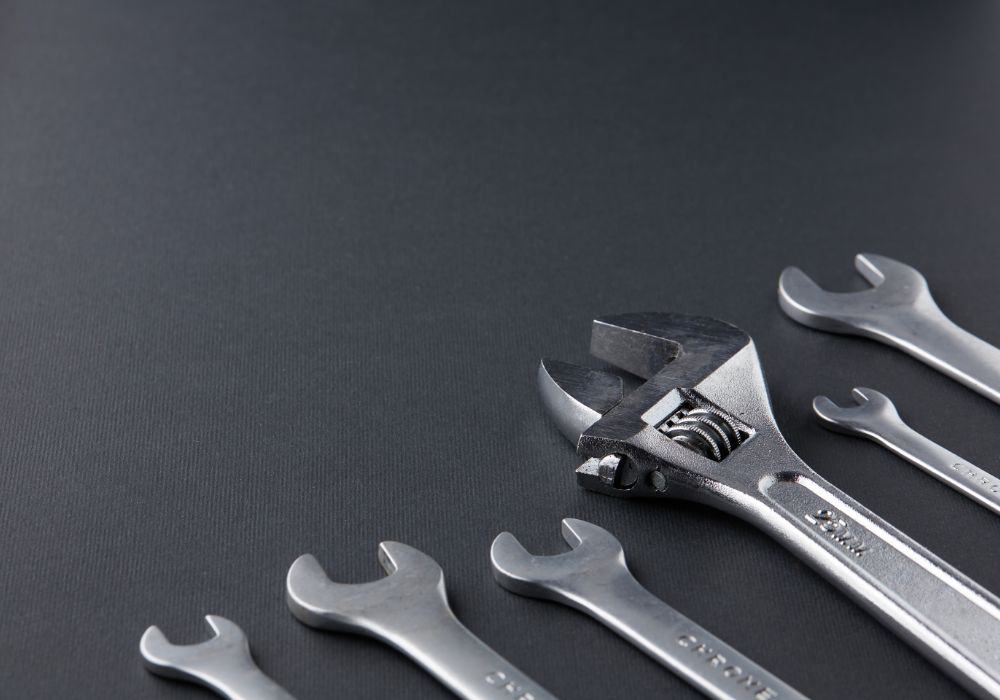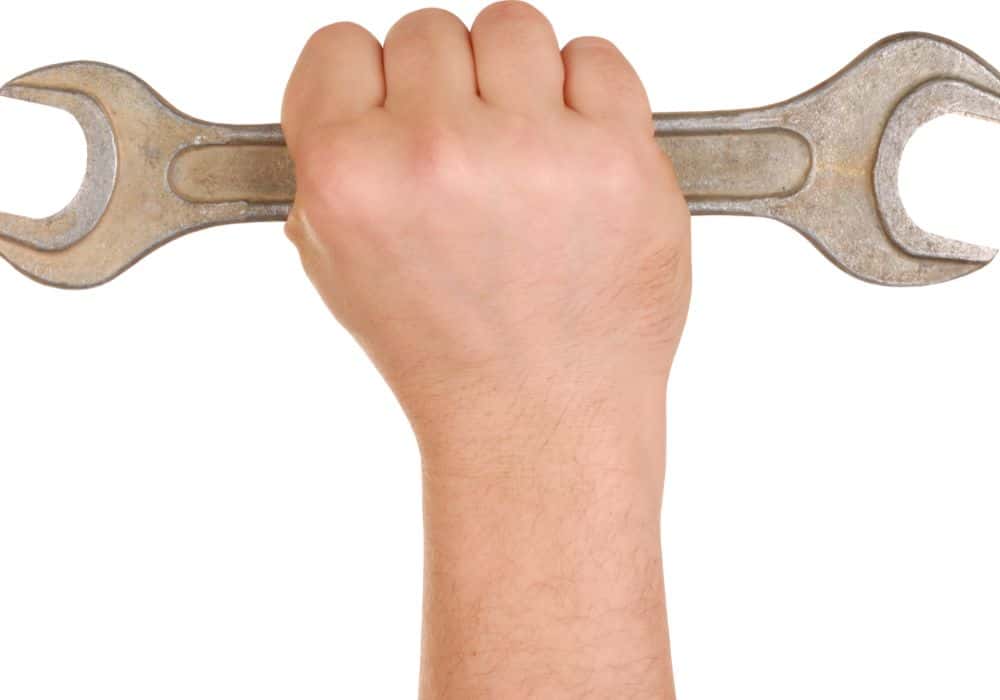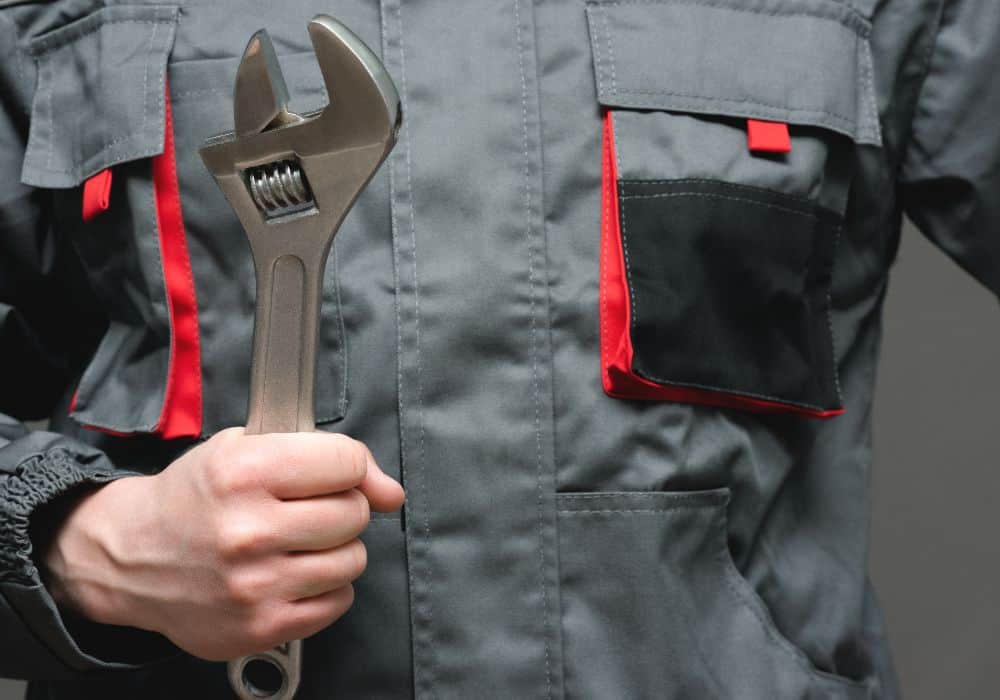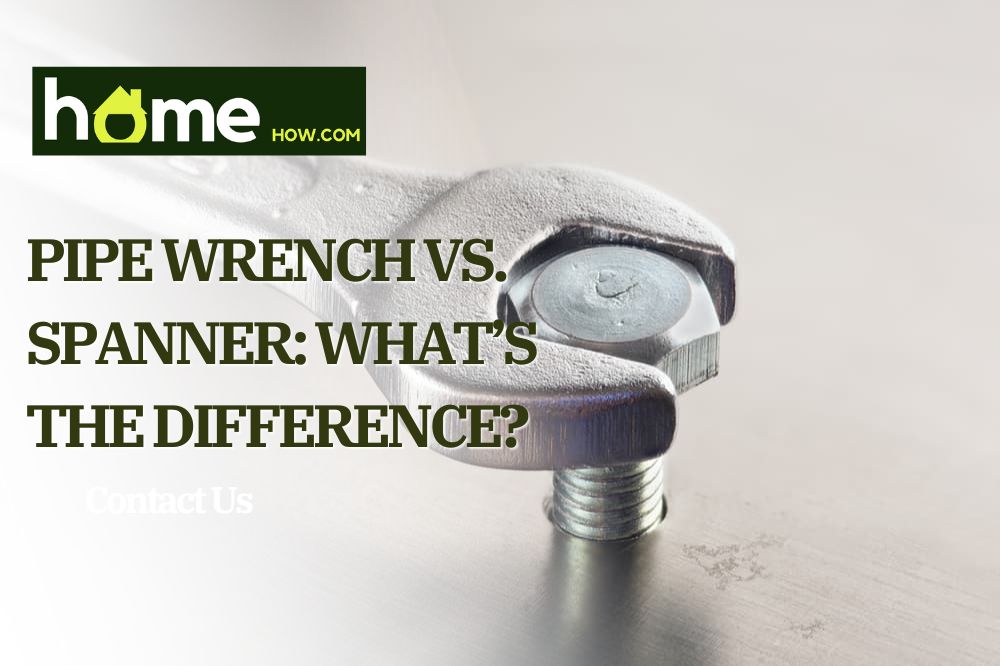Aren’t the spanner and wrench the same thing? Are you confused about the differences? Most people are. This is mainly because the two words are often used interchangeably, especially in the United States. Let’s look at pipe wrench vs. spanner, so you can determine the best tool for the job.
In the UK and areas like Australia, Ireland, and New Zealand, the term spanner refers to a hand tool used for tightening and loosening nuts and bolts. A wrench, on the other hand, is a similar tool but is used for non-fastening elements like pipes.
In the U.S., a wrench is the standard term used to refer to the hand tool used for fitting or removing a fastening by turning nuts and bolts. Spanner, in this case, is used for specialized wrenches with adjustable hooks as the head. You’ll find this tool commonly known as the “spanner wrench.”
Even in Australia and the Commonwealth, people now use the two terms interchangeably due to imports from the U.S. that have blurred the line between the two names. It’s important to note that although there is often confusion, these are two separate tools, each with its characteristics, types, and specific use cases.
What is a Wrench?
A wrench is a tool designed with a moveable lower jaw and increased grip for tightening and loosening nuts and bolts. The moveable jaw comes in handy when working with bolts and nuts of different sizes. One wrench can be used for various size fastenings, but it’s always important to look at the maximum, and minimum sizes indicated.
While wrenches are handy tools for frequent use around the house, they are typically bulky in nature, which renders them unusable for precision work in narrow spaces, particularly automotive jobs. Moreover, as they are not size-specific, there are increased chances of rounding the fastening, which can be frustrating.
What is a Spanner?
A spanner is a size-specific tool, which essentially does the same job as a wrench but is more suitable for precision jobs. The head of a spanner is slimmer than that of a wrench, and the spanner is generally less bulky compared to a wrench.
The most common spanner type has a box end and an open end, which help access different points. There is a reduced risk of rounding when working with spanners as they are size-specific.
Pipe Wrench vs. Spanner: Compared

1. Physical properties
Most wrenches are adjustable, either the upper or lower jaws, as they are used on non-fastening devices and smooth surfaces like pipes. Moreover, they have teeth, or jagged edges to increase grip.
Some common types of wrenches include:
- Pipe Wrench: Its main purpose is holding or turning pipes or circular bars. They come in several different sizes, based on the handle length. Its F-shaped design, fixed handle, movable upper jaw, and stationary lower jaw facilitate a firm grip on rounded surfaces.
- Adjustable Wrench: Also known as the crescent wrench, this tool is designed with movable jaws to help adjust the wrench to the size of the bolts and nuts being turned. The jaws are moved along a threaded shaft, which is convenient when working with various nuts and bolts, as you won’t have to keep switching tools.
- Monkey Wrench: The key difference between a pipe wrench and a monkey wrench is while pipe wrenches have teeth on their jaws for use on rounded surfaces, monkey wrenches have flat jaws. Monkey wrenches are designed for use on fasteners with flat surfaces, such as screws, lug nuts, and bolts. The flat jaw of the monkey wrench renders it unsuitable for smooth, rounded surfaces like pipes.
- Torque Wrench: The torque wrench is used for fastening bolts, nuts, and screws to a pre-determined tightness level. The amount of torque produced by the wrench is adjustable, which makes the wrench suitable for several different projects.
- Spud Wrench: It’s a wrench with a long handle and a pivot mechanism at one end, designed for pipe fittings. It’s a versatile tool that can also be used for tightening and loosening nuts and bolts.
- Plumber’s Wrench: These wrenches are super rare and are only ever used by professional plumbers. They look like pliers, but the jaw in a plumber’s wrench is shaped to fit hexagonal nuts specifically. Additionally, these jaws can be adjusted to fit various pipe fittings. A plumber’s wrench is often used when working on fixtures and pipes.
- Socket Wrench: Socket wrenches are quite popular because they have various applications. Their ratcheting mechanism helps users save time, as they don’t have to keep removing the socket from the bolt or nut after each turn. Instead, they can just lift up on it to reverse the direction.
- Oil Filter Wrench: This type is primarily used in the automotive industry and comes in four different styles. In most cases, the style must match the brand of the car. Aside from the claw wrenches that work like any adjustable wrench, it has a chain strap or metal strap with a loop for wrapping around the casing.
While there are some adjustable spanners, most of them are not. The design specifications for spanners have to do with size-specificity for particular applications. Some common spanner types include:
- Open-ended Spanner: These are the most common types of spanners. They’re designed with two U-shaped ends, one larger than the other. They come in handy when loosening and tightening nuts and bolts, especially those in hard-to-reach places.
- Combination Spanner: Combination spanners are open-ended on one side and box-ended on the other. The box end has a closed loop for square or hexagonal nuts, and the other side is an open U-shape used for general tightening and loosening.
- Ring Spanner: Ring spanners have attached loops at both ends, and the ring heads fit into either square or hexagonal bolt heads. Each end is differently-shaped, and often the loops are slightly higher or lower than the handle to hold the recessed nuts and avoid rounding the edges.
- Stubby Spanner: The stubby spanner is the smaller version of the combination spanner and is suitable for use in confined spaces. Some stubby spanners come with a hinge on the handle for angling and better precision.
- Adjustable Spanner: Also known as crescent spanners, they are designed with spiral screws that open or close the crescent as you rotate. They also have built-in screws at the base of the head for adjusting the jaw width.
- Ratcheting Spanner: This is a type of combination spanner with a ratcheting mechanism in at least one end. The ratchets eliminate the need to remove the spanner when the arc is complete. All you have to do is rotate it back to the starting point to continue. This is an excellent option when working in tight spaces.
2. Use Cases

While there are several types for specific uses, a wrench is typically a general tool used for fastening, gripping, tightening, and loosening things like nuts, bolts, and pipes. Wrenches are particularly useful when working with pipes and other smooth rounded surfaces where grip is fundamental.
Wrenches are handy tools for frequent use around the house but are typically bulky in nature, which renders them unusable for precision work in narrow spaces, particularly automotive jobs. Moreover, as they are not size-specific, there are increased chances of rounding the fastening, which can be frustrating.
Spanners, on the other hand, are very specific in nature. They basically do the same thing wrenches do, but are more suitable for precision work, especially in the automotive industry. Spanners are designed with more specificity depending on the applications.
The most common spanner type has a box end and an open end, which help with accessing different points. There is a reduced risk of rounding when working with spanners as they are size-specific.
3. Cost
The price of both wrenches and spanners will depend on the specific type and application. Wrenches are typically fairly affordable compared to spanners. Specific tools like an oil filter wrench or an adjustable spanner tend to cost more than general-purpose wrenches and spanners.
4. Material

Spanners are often made from carbon steel, chrome vanadium steel, or drop-forge alloy steel. Heat treatment is used to increase the strength of spanners, for maximum durability.
Wrenches, particularly the higher quality ones, are made from chromium-vanadium alloy tool steels. Chrome or vanadium is the best material for wrenches. They are also often chrome-plated to prevent corrosion and for easier cleaning.
5. Weight
Wrenches tend to be heavier and bulkier compared to spanners. Tools like pipe wrenches and monkey wrenches are heavy by design, for suitability to their application.
Spanners are generally lightweight, particularly special-purpose spanners. You’re more likely to find spanners in a portable toolkit because they are lighter and used for general applications. They are designed for use in precision work, so bulk and weight are minimized.
Conclusion
We hope the information shared above has been sufficient in answering the question of pipe wrench vs. spanner. If you’re thinking of adding them to your toolbox, now you know the specific types that would be helpful in particular instances.
If your tasks are more plumbing-related, you’re better off with a pipe wrench. If you’re working with specific-size bolts and nuts, you can choose from the various types of spanners available.
If you can, spring for both the wrench and the spanner, as they both come in handy with DIY around the home. If you have any more questions about wrenches and spanners, feel free to leave a comment below, and we’ll get back to you.
